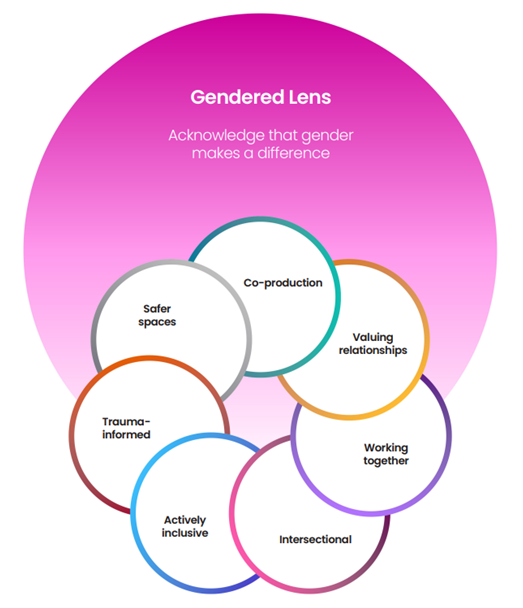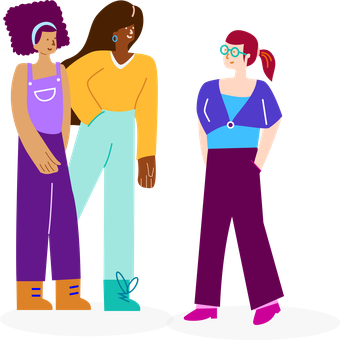Last updated: 10 November 2025
Homeless Link have produced a Gendered Lens Framework to support homelessness services to responds effectively to women.
The Gendered Lens Framework asks services to consider the impact of gender on a person’s experience of homelessness and ability to access the service. It includes seven approaches to service design and delivery:
- co-production
- valuing relationships
- working together
- intersectional
- actively inclusive
- trauma-informed
- safer spaces
Homeless Link have created a series of bitesize videos (5-10 minutes) for homelessness professionals to understand the impact of gender on women and the steps they can take to embed a gendered lens through approaches to service design and delivery.

Introduction
This video covers:
- What is gender.
- What is the impact of gender on experiences of homelessness.
- Why do homelessness services need to become gender informed.
Gendered Lens
This video covers:
- What is a 'Gendered Lens'.
- What are gendered needs.
- How to apply gendered lens to services.
Additional Resource: a toolkit written by St Mungo's and Standing Together Against Domestic Abuse 'Keeping Us Safer: An Approach for Supporting Homeless Women Experiencing Multiple Disadvantage”
Co- Production
- Reaching out to women.
- Recognising strengths.
- Actions services can take to co-produce services with women.
Additional Resource: a toolkit produced by Homeless Link on Co-Production
Valuing Relationships
This video covers:
- Healthy relationships.
- Relationships with children
- Actions services can take to value women's relationships.
Additional Resource: St Mungo's toolkit on Supporting Couple in Relationships
Working Together
This video covers:
- Making every contact count.
- Wrap-around support.
- Actions services can take to work together effectively.
Additional resources: a case conferencing tool developed by Single Homeless Project called Team Around Me
Intersectional
This video covers:
- Double disadvantage.
- Need for specialist services.
- Actions services can take to understand and practice an intersectional approach.
Additional Resources: Ask your local by and for and specialist organisations if they have a training offer. Examples include Cultural Mediation - Hibiscus Initiatives ; Halo Project: Trauma Informed training packages. Watch Homeless Link's webinar on Supporting LGBTQI+ Women Experiencing Homelessness
Actively Inclusive
This video covers:
- Barrier to accessing services.
- Why it is necessary to be actively inclusive.
- Actions services can take to be actively inclusive.
Trauma Informed
This video covers:
- Relationship between gender and trauma.
- Supporting women affected by trauma.
- Actions services can take to be gender and trauma informed.
Additional Resource: Homeless Link have produced a practice development tool for being trauma-informed, available here.
One Small Thing have a full accreditation process which provides a national benchmark for trauma aware, trauma informed and trauma responsive practice. You can find out more about their 'Trauma Quality Mark' here.
Safer Spaces
This video covers:
- Managing risk.
- Creating safer spaces .
- Actions services can take to create safer spaces.
Additional Resource: A template created by Your Place Newham to support the development of women's safer spaces, this can be found in the Appendix of the Gendered Len's Framework.

